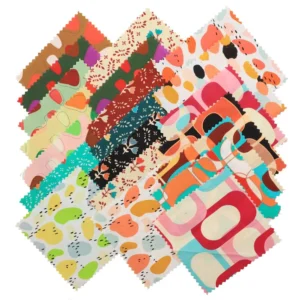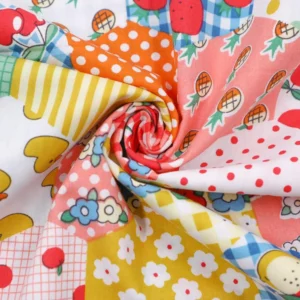If you’re new to sewing and want to explore something cozy and versatile, quilting fabric is a great place to start. Simply put, quilted fabric is made by stitching layers of fabric and batting together to create a warm, durable, and structured material. You can find quilted fabrics in various options, from cotton to polyester, and they’re perfect for making jackets, vests, and even bags.
In this guide, we’ll walk you through everything you need to know about sewing with quilted fabric—from understanding its layers to mastering the techniques that will help you create professional-quality garments. Whether you’re dreaming of a cozy jacket or a chic tote, this guide will get you comfy with quilting and open up endless project possibilities. Let’s jump right in!
Why Choose Quilted Fabric for Your Projects?
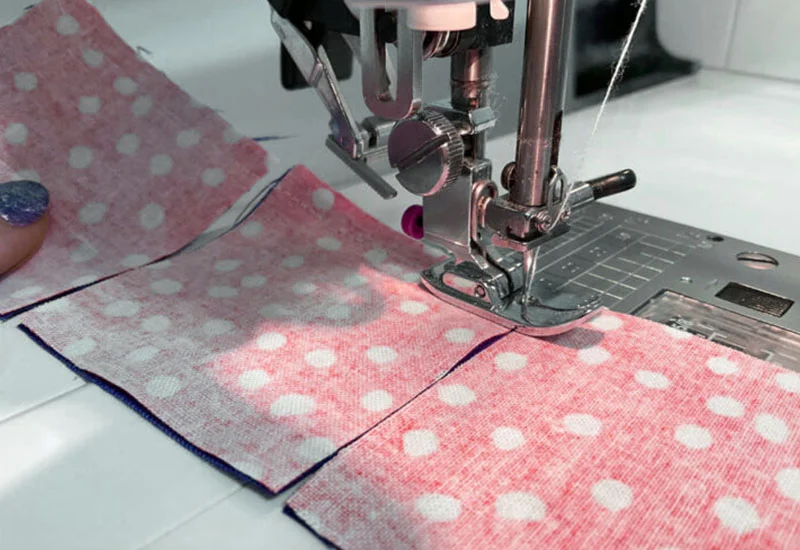
If you’re wondering why quilted fabric should be your go-to choice for sewing projects, here’s why:
Extra Warmth and Insulation
Quilted fabric is perfect for cold weather. The layers trap heat, making it ideal for creating winter garments like jackets, coats, and cozy accessories. It keeps you warm without adding too much bulk, so you’ll feel comfortable and stylish.
Enhanced Durability
The multi-layer construction of quilted fabric adds strength, making it a long-lasting choice for your sewing projects. Whether you’re making outerwear or bags, quilted fabric holds up well over time, even with regular use.
Versatility
Quilted fabric not only provides warmth but also adds structure to your projects. Whether you’re making a jacket, bag, or cushion, it gives your creations the perfect balance of flexibility and form, making them more polished and durable.
Perfect for Beginners & Experts Expanding Their Sewing Skills
Whether you’re just starting out or you’re an experienced sewer looking to challenge yourself, quilted fabric is a great option. It’s easy to work with and offers endless possibilities for projects, from simple accessories to more intricate garments
Types of Quilted Fabrics and Batting
When you’re diving into quilted fabrics, it’s important to understand your options. Each fabric and batting choice offers something unique for your project. Let’s break it down!
Different Quilted Fabric Options
- Cotton Quilted Fabric: Cotton is soft, breathable, and perfect for various projects like jackets or cozy blankets. It’s easy to work with and has a natural feel, making it ideal for those who want comfort and a bit of structure.
- Polyester Quilted Fabric: Polyester is durable, lightweight, and resists wrinkling. It’s a great choice for bags, outerwear, or any project where you want a clean, neat finish. It’s also more affordable than cotton, which is a bonus for budget-friendly projects.
- Wool Quilted Fabric: Wool provides excellent warmth and insulation, making it perfect for winter garments. Though it’s heavier, it’s ideal for cozy coats or blankets, though it may need extra care when sewing.
- Blended Quilted Fabric: Blends, like cotton and polyester, combine the benefits of both fibers. These fabrics are more durable than cotton alone, less prone to wrinkling, and offer added structure, making them great for projects requiring longevity.
Types of Quilting Batting
- Cotton Batting: Soft and breathable, cotton batting is perfect for all seasons. It’s denser than other options, making it great for quilts, though it may require more quilting to prevent shifting.
- Polyester Batting: Lightweight and resilient, polyester batting resists shrinking and offers warmth without excess bulk. It’s perfect for quilts, bags, and jackets but can make projects feel fluffier.
- Bamboo Batting: Eco-friendly, lightweight, and breathable, bamboo batting is ideal for warmer climates. It’s soft and provides excellent insulation, making it a great sustainable option.
How to Choose the Right Fabric and Batting for Your Project?
Choose fabric and batting based on the type of project you’re making.
For lighter garments (e.g., vests):
- Use cotton fabric for a soft, breathable feel.
- Pair it with cotton batting for added comfort.
For outerwear or thicker quilts:
- Use polyester or wool fabric for durability and warmth.
- Pair with polyester or bamboo batting for added structure and insulation.
Pay attention to: Fabric weight and batting thickness to balance warmth, softness, and durability.
Key Tools and Materials for Quilting Fabric
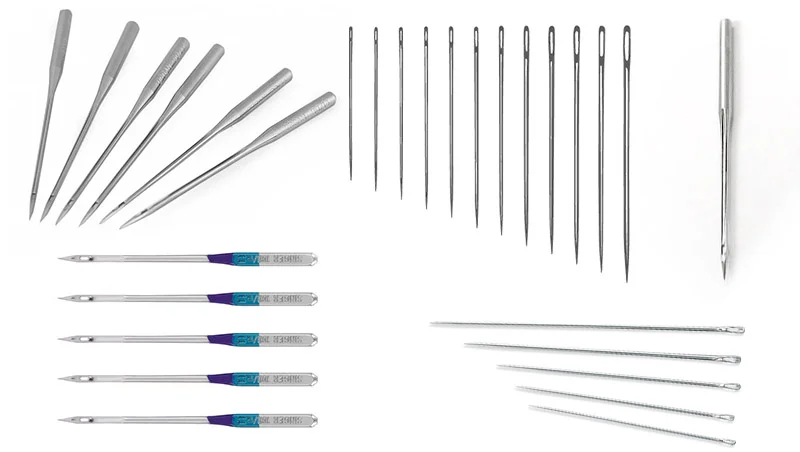
Sewing Machine and Attachments
- Walking Foot: This foot is a game-changer! It keeps your fabric and batting layers moving evenly through the machine, which means no bunching or shifting. If you’re new to quilting, it’s a must for even stitching.
- Optional Attachments: Want to get more creative with your quilting? Try adding a free-motion foot or quilting guides to your sewing machine. These make it easier to add decorative stitches or follow specific quilting patterns.
Essential Sewing Tools
- Quilting Rulers: If you’re serious about getting those clean, precise cuts, a quilting ruler is your best friend. It helps you cut straight lines, especially when you’re working with multiple fabric layers.
- Rotary Cutters: These are perfect for slicing through fabric and batting quickly and smoothly. You’ll get sharp, clean edges every time!
- Fabric Marking Tools: Whether you use fabric markers or chalk, you’ll need something to mark your quilting lines. The best part? They wash out easily when you’re done, leaving no trace behind.
- Quilting Thread: The thread you use makes a big difference! Cotton thread is soft and has a natural feel, while polyester thread is stronger, perfect for projects that need extra durability.
Pins, Needles, and Other Supplies
- Needles: For quilted fabric, the right needle is important. Universal needles work fine for many projects, but quilting needles are designed to handle multiple layers of fabric, making them perfect for thicker quilted fabrics.
- Pins: Strong pins are a must. Quilting pins are longer and sharper, so they won’t bend or break while you sew through those multiple layers.
- Other Supplies: Don’t forget about the basics! Fabric scissors, seam rippers, and thread snips are super helpful to keep everything neat and tidy as you go.
How to Prepare Your Quilted Fabric for Sewing?
Here’s how to get your quilted fabric ready before jumping into your sewing project. Proper prep makes all the difference in how smoothly everything goes. Whether you’re just starting or you’ve been sewing for a while, these tips will help your fabric behave just the way you want it to!
Pre-Washing and Ironing Fabric
Pre-washing is super important! It helps prevent your fabric from shrinking or changing unexpectedly after you’ve already started sewing. Quilt layers can shrink at different rates, so washing them first makes things more predictable. Plus, it’ll get rid of any dust or chemicals, making your fabric easier and safer to work with.
Once you’ve washed your fabric, it’s time to press it. You’ll want to get rid of wrinkles and make sure everything is nice and flat for cutting. Use a medium heat setting with steam to press the fabric, and don’t forget your batting, too! A smooth surface will make sewing way easier.
Cutting Fabric for Quilting
Precision is key when cutting quilted fabric. If the fabric is cut unevenly, it can distort your finished project. Using a quilting ruler and rotary cutter is the best way to get clean, straight cuts. This is even more important if you’re working with layers—wonky edges will be more obvious once everything is pieced together.
Cutting large pieces of quilted fabric or scraps can be tricky. If you’re working with bulkier fabric, try cutting smaller sections at a time. It’s easier to manage and helps prevent mistakes. Take your time—accurate cuts now will save you the headache of fixing them later.
Avoiding Fabric Puckering
Puckering happens when the fabric shifts or wrinkles while sewing, and it’s more common with large quilted pieces. The layers can bunch up under the machine, making it harder to get clean seams. The trick is to sew carefully and gently through these thicker layers.
If you’re worried about puckering, try quilting smaller blocks instead of large pieces. This will give you more control over the fabric, making it easier to keep things smooth. Once you’ve quilted the smaller blocks, you can easily join them together for a seamless result.
Creating the Fabric Sandwich: Layering for Success
A fabric sandwich is made up of three main layers: the top fabric, the batting (which gives your quilt that cozy thickness and warmth), and the backing fabric. Getting these layers just right is key to setting up a smooth base for your quilting.
How to Layer Your Fabric: Step-by-Step Guide
- Start with the Backing Fabric: Lay your backing fabric flat on a clean, smooth surface. Make sure it’s wrinkle-free and pressed—it’s the foundation, so you want it nice and tidy.
- Add the Batting Layer: Grab your batting and place it over the backing fabric. Smooth it out to remove any wrinkles or folds. The batting should cover the entire backing—no gaps or folds here!
- Top Fabric Comes Last: Add your quilt top fabric on top of the batting. Make sure everything’s aligned and smooth. If needed, give it a quick press to get rid of any creases that might pop up.
- Smooth and Adjust: Now that everything’s in place, gently smooth out any bubbles or wrinkles, especially at the edges. You want all three layers to be perfectly flat and aligned before you start securing them down.
Securing the Layers with Temporary Adhesives
To keep everything from shifting while you quilt, you need to secure those layers. You can easily do this with basting spray. Just spray a thin layer on the batting, then lay your quilt top over it. If you prefer, you can also use fusible web, which bonds the layers together when pressed. Both methods keep everything in place without the hassle.
How to Sew Quilted Fabric: Step-by-Step Guide
1. Install Your Walking Foot and Start Sewing
Okay, let’s get the ball rolling! If you’ve got a walking foot, now’s the time to pop it onto your sewing machine. This foot is a total game-changer when it comes to working with multiple layers. It helps keep everything feeding through evenly so your fabric doesn’t shift.
Once that’s in place, sew your first line from the center of your fabric, working your way out towards the shorter lines. Sew all your lines in one direction first, then go back and sew the other way. This will keep your fabric from shifting around, so everything stays smooth as you sew.
2. Sew All the Marked Lines
Sewing all the lines you’ve marked! Just follow those lines carefully, taking it slow to make sure everything lines up. Don’t rush through it, as sewing at a steady pace will help avoid any puckering or crooked stitches. If you’re following a pattern, keep it consistent, but don’t hesitate to take breaks when you need to.
3. Pin and Cut Out Your Pattern Pieces
Lay them out on the quilted fabric, making sure they’re in the right spot. Pin them down nice and secure so they don’t shift while you cut. Take your time, follow the pattern lines carefully, and cut around them precisely. The more neat and organized you are here, the better your finished quilt will look! Once your pieces are cut, you’re ready to keep going on your quilting journey.
Advanced Tips for Sewing with Quilted Fabric
Let’s take your quilting skills to the next level with some advanced tips that will help you handle those tricky sewing challenges. These easy-to-follow techniques will make your quilted fabric projects even more amazing!
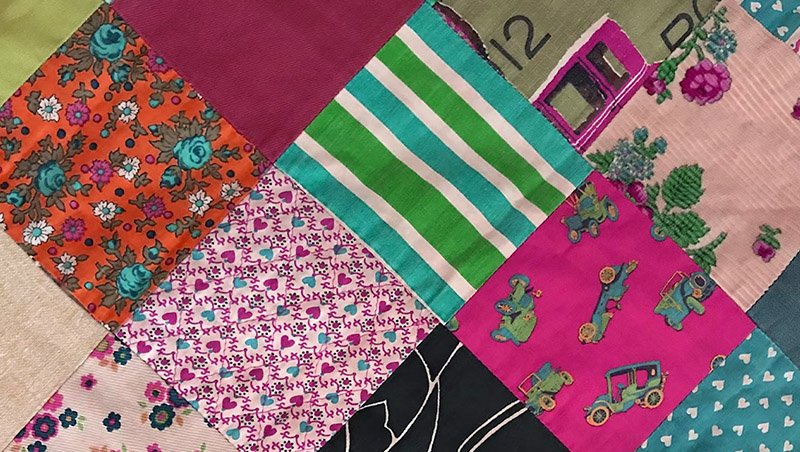
Fix Puckers and Shifting
When working with quilted fabric, puckering and shifting can sometimes happen—especially with all those layers. To prevent this, make sure your fabric is well-basted or pinned before sewing. If you do end up with some puckers, don’t panic!
Gently pull the fabric in opposite directions to smooth it out, or try using a walking foot to help the fabric feed more evenly. If you notice the fabric shifting while sewing, slow down your stitching speed and gently guide the fabric with your hands to keep everything aligned.
Add Pockets or Zippers Safely
Want to add a pocket or zipper to your quilted fabric project? No problem, but there’s a trick to doing it without ruining all your hard work.
For pockets, make sure the fabric is secured well before cutting and sewing it into place. Use a basting stitch or pins to hold everything down.
When adding zippers, be extra cautious around the quilted seams—use a zipper foot and go slow to avoid any snags. The key is to keep your stitches neat and to press the fabric carefully so nothing shifts during the process.
Use Fancy Stitches for Style
Decorative stitches can add beautiful texture and design to your fabric without much effort. You can use them to enhance seams or add borders.
If your machine has built-in decorative stitches, give them a try! Just make sure to test the stitch on a scrap piece first to make sure it looks good with the quilted fabric. Play around with different thread colors to make the stitches pop, or choose a subtle option for a more delicate touch. A little extra stitching can really make your quilt stand out!
Conclusion
So, now that you’ve got the basics of sewing with quilted fabric down, it’s time to jump in and create something amazing! Whether you’re working on a cozy jacket or a cute bag, quilted fabric adds the perfect touch of texture and style to your projects. Don’t stress if it feels a little tricky at first—remember, practice makes perfect, and with each stitch, you’re getting better!
Ready to dive in? Go ahead and start your first quilted fabric project! It’s all about taking it one step at a time. If you’re looking for more resources or want to level up your skills, head over to F&A Fabric for tons of great materials and tips. Happy sewing!
